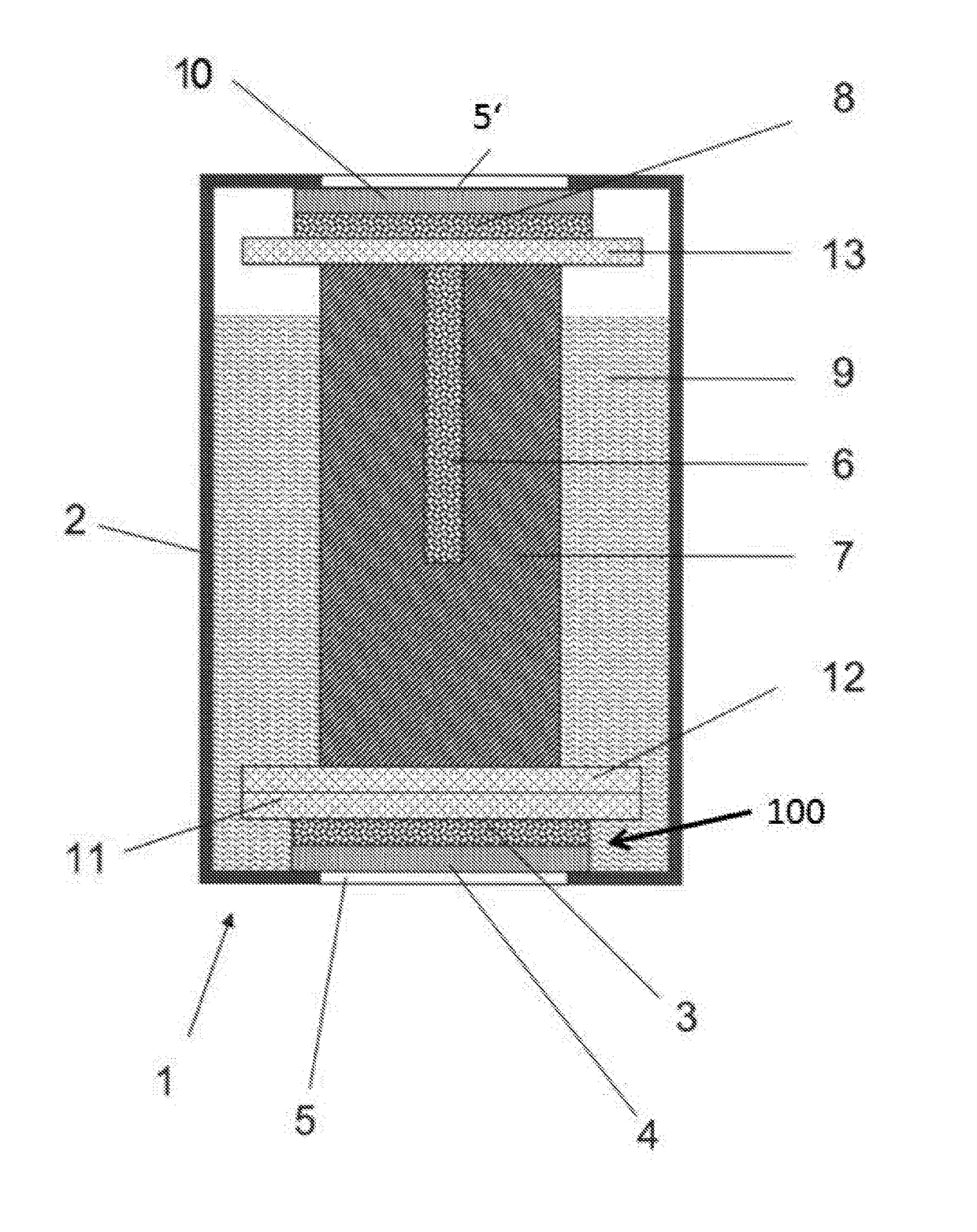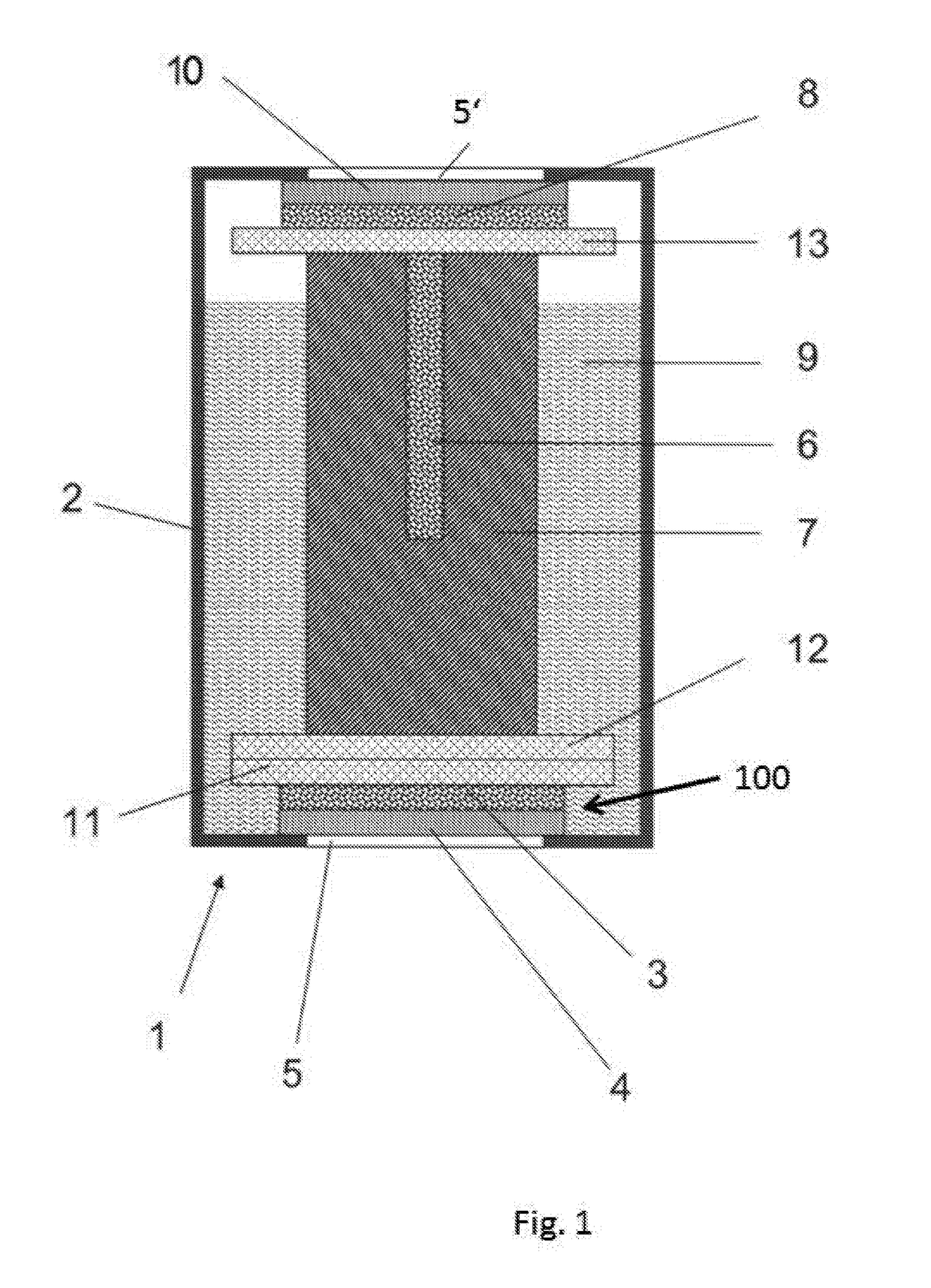Electrode for an electrochemical gas sensor, manufacturing method for an electrode, and use of an electrode
a gas sensor and electrochemical technology, applied in the direction of electrode manufacturing process, electrode collector coating, inorganic chemistry, etc., can solve the problems of not being able to effectively use graphene for manufacturing electrodes for electrochemical gas sensors, unable to react, reaction will stop, etc., to achieve the widest possible measuring range, the effect of reducing the cross sensitivity
- Summary
- Abstract
- Description
- Claims
- Application Information
AI Technical Summary
Benefits of technology
Problems solved by technology
Method used
Image
Examples
example 1
Preparation of an Electrode for Use in an Electrochemical Gas Sensor
[0080]An electrode for use in an electrochemical gas sensor, consisting of reduced graphene oxide, was prepared as follows. A graphene oxide dispersion was first prepared from 1 g of single-layer graphene oxide per L of distilled water. A 4.5-mL solution was taken from this and mixed with about 70 mL of 2-propyl alcohol. This dispersion was subsequently evaporated under vacuum. This dispersion was then poured over a gas-permeable membrane (PTFE membrane) with a diameter of 80 mm. The dispersing agent was then evaporated under vacuum. The graphene oxide electrode thus obtained was then placed for about 5 hours into a concentrated hydrogen iodide solution and then dried on air. The electrode obtained comprises a gas-permeable membrane (4), on which a graphene layer (3) is applied as the electrode material.
[0081]It has a resistance of 140 Ωcm−1. It is seen that the graphene layer (3) is applied from a dispersion onto t...
example 2
Detection of Propofol by Means of a Graphene Electrode
[0087]An electrochemical gas sensor according to the present invention with a measuring electrode according to the present invention was tested with Propofol at a concentration of 20 ppb. The exposure to the gas was carried out at a relative humidity of 50% and an ambient temperature of 20° C. It is seen in FIG. 2 that the electrochemical gas sensor yields a nearly stepped measured curve. The gas exposure time in seconds is plotted on the abscissa and the sensor current on the ordinate. The gas exposure was started at time t1 and ended at time t2. It is seen that the sensor current changes nearly abruptly at the start of the gas exposure at time t1 and shows the reaction gas (Propofol) rapidly and reliably. After removal of the reaction gas at time t2, the gas sensor returns to the starting state just as rapidly.
example 3
Detection of Chlorine Dioxide by Means of a Graphene Electrode
[0088]An electrochemical gas sensor according to the present invention with a measuring electrode according to the present invention was tested with chlorine dioxide at a concentration of 1.4 ppm. The gas exposure was carried out at a relative humidity of 50% and an ambient temperature of 20° C. It is seen in FIG. 3 that the electrochemical gas sensor yields a nearly stepped measured curve. The gas exposure time in seconds is plotted on the abscissa and the sensor current on the ordinate. The gas exposure was started at time t1 and ended at time t2. It is seen that the sensor current changes nearly abruptly at the beginning of the gas exposure and shows the reaction gas (Propofol) rapidly and reliably. After removal of the reaction gas at time t2, the gas sensor returns to the starting state just as rapidly.
PUM
| Property | Measurement | Unit |
|---|---|---|
| resistance | aaaaa | aaaaa |
| resistance | aaaaa | aaaaa |
| diameter | aaaaa | aaaaa |
Abstract
Description
Claims
Application Information
 Login to View More
Login to View More - R&D
- Intellectual Property
- Life Sciences
- Materials
- Tech Scout
- Unparalleled Data Quality
- Higher Quality Content
- 60% Fewer Hallucinations
Browse by: Latest US Patents, China's latest patents, Technical Efficacy Thesaurus, Application Domain, Technology Topic, Popular Technical Reports.
© 2025 PatSnap. All rights reserved.Legal|Privacy policy|Modern Slavery Act Transparency Statement|Sitemap|About US| Contact US: help@patsnap.com



